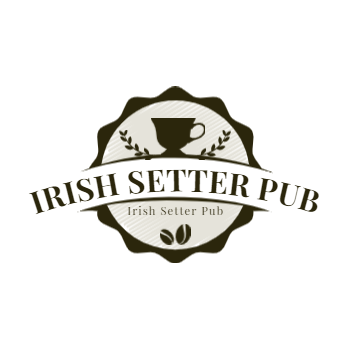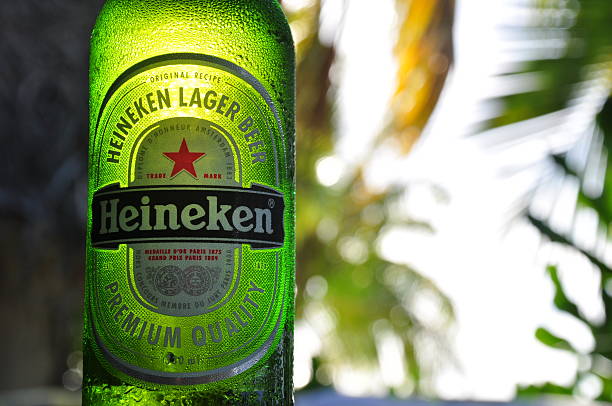Delving into the specifics of Heineken’s alcohol content is not just about unraveling the details of one of the world’s most popular beers; it’s about understanding a key aspect that defines its character, taste, and the experience it offers. The article titled “Heineken Alcohol Content” serves as an authoritative source on this topic, crafted by experts who bring a wealth of knowledge about brewing sciences, alcohol regulations, and consumer preferences to the table. This piece is designed to not only provide the precise alcohol by volume (ABV) percentage of Heineken but also to explore how this factor influences the beer’s profile and its reception among different audiences worldwide.
Heineken, with its rich history and iconic status in the beer industry, offers a case study in how alcohol content can impact a brand’s identity and its positioning in various markets. This article sheds light on the careful balance brewers must strike between adhering to traditional recipes and adapting to evolving tastes and legal requirements across the globe. Whether you’re a beer enthusiast curious about what goes into your favorite lager, a budding brewer looking to understand the complexities of alcohol content in beer production, or simply someone interested in the cultural phenomena surrounding global beer brands, this guide promises to engage and inform.
With a meticulous approach to its subject matter, “Heineken Alcohol Content” not only answers a straightforward question but also invites readers on a deeper exploration of what makes Heineken distinctively Heineken. From discussions on brewing techniques to insights into how alcohol content affects flavor, body, and aroma, this article is poised to elevate your knowledge and appreciation of not just Heineken, but beer in general. So, prepare to dive into a pint of facts and figures that will enrich your understanding of one of the most celebrated beers on the international stage.
Overview of Heineken as a Leading Beer Brand
Founded in 1864 by Gerard Adriaan Heineken in Amsterdam, Heineken N.V. has grown to become the second largest brewer in the world. Some key facts about the company:
- Brews over 300 international, regional, local and specialty beers and ciders
- Operates in over 70 countries with over 85,000 employees
- Most international premium beer brand with sales in every continent
- Flagship Heineken lager accounts for nearly 30% of company’s global beer volume
With such an expansive reach across cultures and geographies, Heineken has achieved impressive brand recognition and loyalty over the decades. However, such success does not come without responsibility, particularly regarding the alcohol content of its beers.
More watching video: How Heineken Became so Popular
Why Alcohol Content Matters?
Alcohol content, measured as alcohol by volume (ABV), indicates the percentage of a drink that consists of pure alcohol. For beer, ABV levels generally range from around 3% to 12%. But why does this metric matter?
Influences Consumption Decisions
The ABV % provides consumers with key data to make informed choices about drinking. Someone may opt for a lower alcohol beer if they have to drive or limit intake.
Affects Alcohol’s Effects
Higher ABV levels mean faster intoxication with smaller servings. Knowing this helps moderate intake.
Determines Nutritional Value
More alcohol means higher calorie counts, which impacts diet and health goals.
Sets Processing Parameters
ABV impacts required fermentation, filtering, and aging processes in production.
For all these reasons, alcohol content is an essential attribute for evaluation of any beer, including popular brands like Heineken.
Heineken Lager Beer
Heineken Lager is the brand’s signature beer. First brewed in 1873, it has maintained tremendous popularity through the decades.
Flavor Profile
Heineken Lager has a mildly bitter taste with fruity and malty notes. Hops give it a distinctive aroma. The lager is nicely carbonated with a rich, smooth mouthfeel.
Packaging and Availability
The green Heineken bottle and red star logo are instantly familiar. The pale lager is widely available globally on tap and in bottles, cans, and Heineken’s mini kegs.
Global Recognition
Heineken Lager is largely considered an iconic beer brand. It’s well known across cultures from America to Asia and commonly seen in media, sponsorships, and bars – a true international premium lager.
Alcohol By Volume in Heineken
Heineken Lager contains 5% ABV (alcohol by volume). This gives the lager a mildly intoxicating effect while maintaining its crisp, refreshing taste.
Responsible Consumption
With 5% ABV, Heineken drinkers should consume responsibly by:
- Drinking no more than 1-2 servings per hour
- Alternating alcoholic and non-alcoholic drinks
- Eating food to slow alcohol absorption
- Staying hydrated with water
- Avoiding driving and tasks requiring coordination
Pacing intake and understanding alcohol’s effects allows enjoyment without health risks or intoxication.
Global Variations
Heineken tweaks recipes to adhere to local regulations and preferences. So ABV can range from:
- 4.6-5% in Europe and Americas
- 3-4% in Australia and parts of Asia
- 0.0% for non-alcoholic Heineken
But the original 5% Heineken Lager remains the standard in most markets.
History of Heineken’s Alcohol Content

Over Heineken’s 150+ years of brewing, the ABV has evolved with consumer tastes and technology:
| Year | Alcohol by Volume |
| 1864: | Around 4% |
| 1873: | 5% |
| 1950s: | Decreased to about 4% |
| Late 1900s: | Returned to 5% |
Through it all, 5% emerged as the ideal balance of flavor and drinkability desired by Heineken fans worldwide.
Health Considerations for Alcohol Content
Health organizations provide guidelines regarding safe alcohol consumption limits based on factors like weight, gender, and age which influence intoxication levels and health risks.
For the average adult, many suggest:
- No more than 1-2 standard drinks per day
- No more than 7-14 per week for men; 7 per week for women
One 12 oz Heineken at 5% ABV equals one standard drink. So Heineken’s alcohol content fits health recommendations if consumed moderately. However, abstention is advised for:
- Those unable to restrict intake
- Individuals with health issues where alcohol poses heightened risks
- Activities like driving where alcohol impairment must be avoided
While Heineken packs flavor at 5% ABV, carefully monitoring intake remains key for health.
Comparison With Other Lager and Beer Types
Heineken’s 5% alcohol lands in the average range compared to other major lagers and beer varieties:
| Beer Type | Typical ABV Range |
| Light Lagers | 4-5% |
| Pilsner | 4-5% |
| APA (American Pale Ale) | 4.5-6% |
| IPA (India Pale Ale) | 6-8% |
| Stout | 4-6% |
| Porter | 4-7% |
| Craft Beers | 5-12% |
So Heineken supplies easy drinking refreshment without the higher alcohol punch of many craft IPAs or strong beers. This makes it appealing for casual drinking occasions.
What Impacts Heineken’s Alcohol Levels?
Many variables influence the alcohol content of Heineken’s beers during production:
- Yeast – Different yeast strains convert more or less sugar to alcohol. Heineken uses specialized yeasts.
- Sugars – More fermentable malt sugars create higher alcohol levels. Heineken uses just enough for 5% ABV.
- Fermentation – Allowing more time converts more sugars and raises ABV. Heineken precisely controls fermentation.
- Filtration – Removing more residuals decreases ABV slightly. Heineken filters gently to preserve taste.
- Water – Harder water needs more malt to achieve target ABV. Heineken uses high-quality water.
With modern brewing science, Heineken precisely hones its process to deliver 5% ABV time after time.
Cultural Perspectives on Beer and Alcohol
Views towards alcohol vary widely across cultures, impacting consumption habits and preferences:
- The Czech Republic has the highest beer consumption per capita globally where beer is considered an everyday drink.
- In Germany, beer purity laws restrict additives, encouraging full-flavored brews.
- Belgium hosts a wide range of specialty beers stemming from unique local traditions.
- In France, wine culture dominates although beer has become a trendy drink among youth.
- The Netherlands, Heineken’s homeland, has always harbored a vibrant beer culture, although consumption has declined recently.
Understanding cultural perspectives allows brewers like Heineken to cater their products, including alcohol content, to local tastes.
Impact on Flavor
Heineken’s 5% ABV plays an integral role in producing its signature taste:
- Elevated alcohol enhances desirable flavors from malt and hops.
- Higher alcohol content helps balance bitterness and carbonation.
- Moderate 5% ABV prevents hot, boozy flavors.
- Alcohol contributes to fruity esters and aromas during fermentation.
- Carbonation seems crisper and foam clings better at 5% strength.
The right alcohol amount unlocks Heineken’s intended flavor balance. Too little or too much would ruin the profile that makes it so recognizable and refreshing.
Environmental and Sustainability Factors

Heineken has implemented many eco-friendly practices that intersect with alcohol production:
- Water conservation during brewing preserves precious resources.
- Renewable energy powers operations lowering emissions.
- Reduced packaging decreases materials and transport impacts.
- Spent grain gets reused for animal feed and power generation in a circular economy model.
However, higher strength beers require more resources overall compared to lower alcohol options. This presents sustainability challenges Heineken must continually improve upon.
Brand Positioning and Consumer Perceptions
Heineken has strategically packaged and marketed itself as the ideal global beer brand. The 5% ABV supports this in several ways:
International Appeal – 5% alcohol content conforms with mainstream lager expectations worldwide.
Moderation – Its mild alcohol level encourages responsible enjoyment for any drinking context.
Premium Profile – A respectable 5% ABV signals quality ingredients and sophistication without excess.
Smooth Drinkability – The well-integrated alcohol creates a universally refreshing lager taste.
Consumer feedback reveals Heineken’s 5% hits the desired sweet spot, enhancing its identity as a proper yet drinkable international brew.
Encouraging Responsible Enjoyment
While touching on health considerations earlier, it’s worth reiterating the importance of moderation and informed alcohol consumption as promoted by Heineken:
- Respect beer’s effects by drinking slowly and with food.
- Alternate alcoholic and non-alcoholic choices when drinking.
- Avoid impaired driving by planning safe transport or selecting low alcohol options.
- Consider circumstances and personal health factors when deciding on beer ABV.
- Stay hydrated by consuming water alongside beer.
- Understand your limits and stop drinking once impairments like reduced coordination occur.
Heineken seeks to foster a culture of responsible enjoyment centered around savoring beer’s flavors, not overindulgence.
Frequently Asked Questions
Here are some common FAQs about Heineken’s alcohol content:
What is Heineken’s alcohol percentage?
- Heineken Lager contains 5% alcohol by volume (ABV).
Is Heineken considered a strong beer?
- At 5% ABV, Heineken has a mild alcohol level compared to many craft beers and is considered a standard lager.
Does alcohol percentage vary by country?
- Heineken adjusts the recipe slights for some markets but aims for 5% worldwide.
How does Heineken compare to other major beer brands?
- Heineken’s alcohol content is similar to other international lagers like Budweiser, Stella Artois, and Beck’s.
Is there zero alcohol Heineken?
- Yes, Heineken 0.0 provides the same lager taste without alcohol.
How can I drink Heineken responsibly?
- Pace yourself to 1-2 per hour, alternate with water, consume with food, and plan safe transit when drinking.
Conclusion
As a beloved global beer leader, Heineken has honed an iconic lager taste centered around 5% ABV. This alcohol content balances thirst-quenching enjoyment with the importance of moderation and health. With responsible consumption, beer fans can savor Heineken’s mild alcohol profile and signature flavors for years to come.
More From Irish Setter Pub
- Jack Daniels Alcohol Percentage – How Strong Is Jack Daniels
- What Temperature Does Beer Freeze At? Learn The Answer Here
- How Much Guinness Alcohol Content Of? Learn The Answer Here
- Does Non Alcoholic Beer Have Alcohol? Learn the Answer Now

